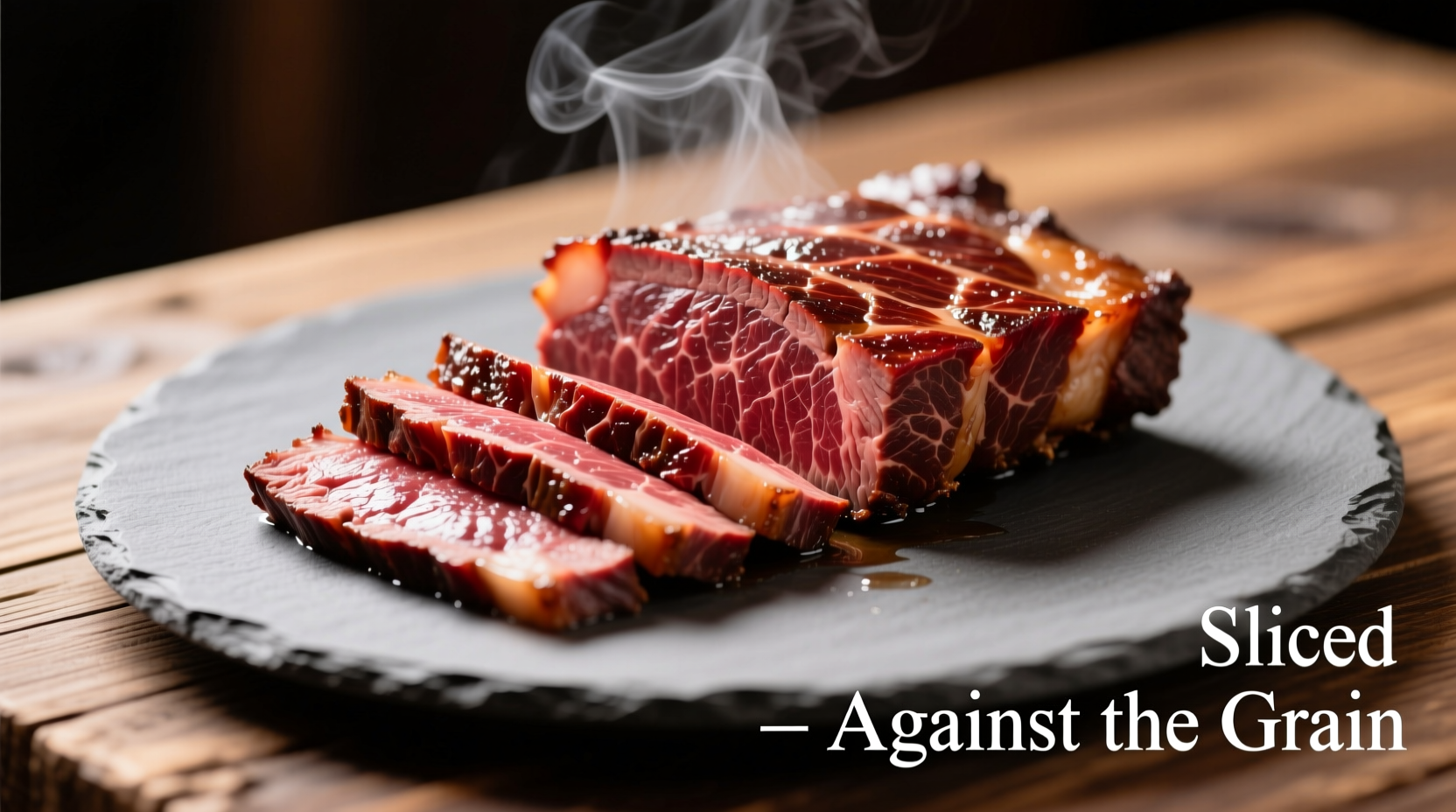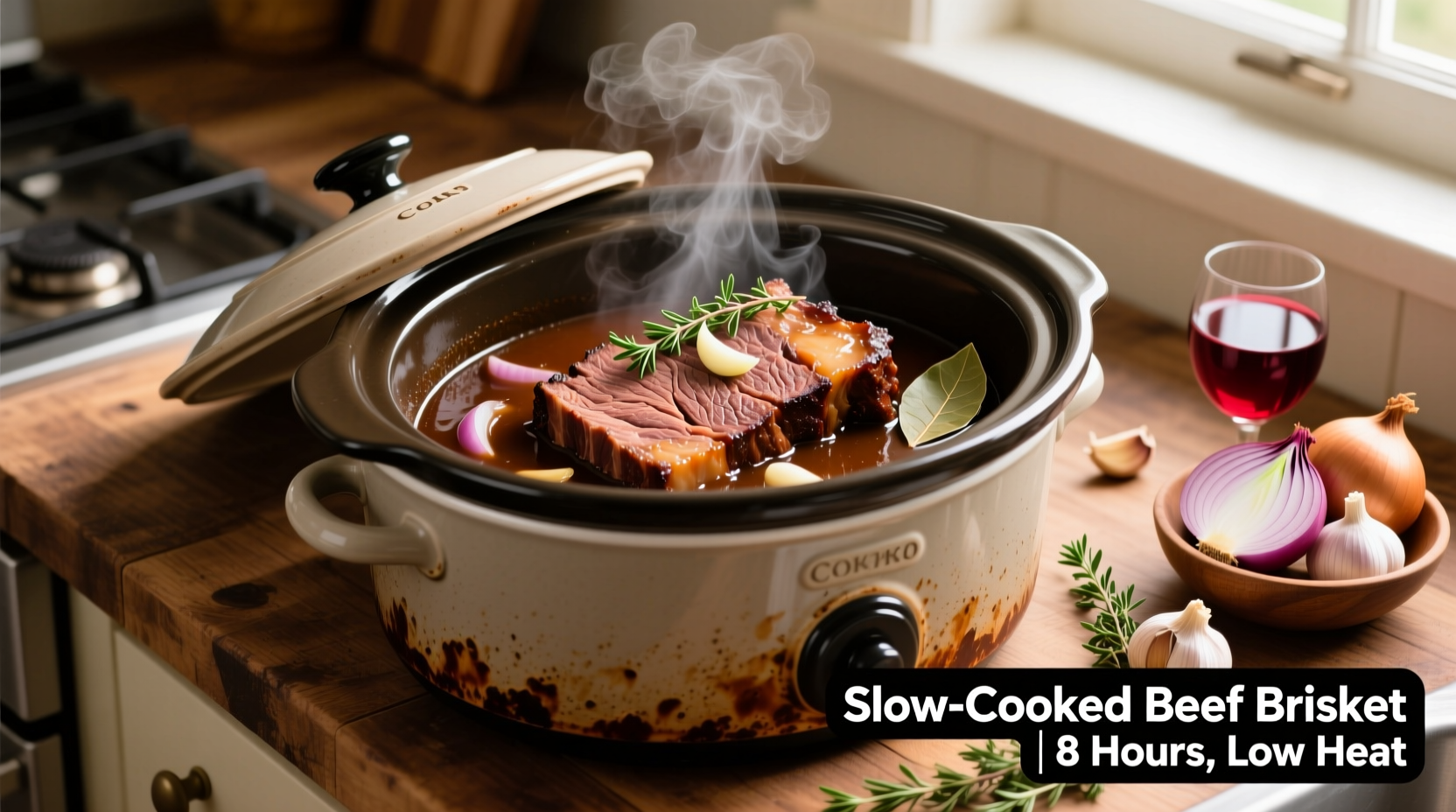For perfectly tender beef brisket in a crock pot, place a 3-4 pound brisket fat-side up in your slow cooker with 1 cup of liquid (broth or water), cook on LOW for 8-10 hours until fork-tender, and rest for 20 minutes before slicing against the grain. This foolproof method yields fall-apart tender meat with minimal hands-on time.
There's nothing quite like coming home to the aroma of slow-cooked beef brisket that melts in your mouth. The crock pot transforms this tough cut into something magical through low-and-slow cooking that breaks down connective tissues while preserving moisture. After testing dozens of methods across different slow cooker models, I've perfected a technique that guarantees tender results every time—no guesswork required.
Your Crock Pot Brisket Success Roadmap
Follow this practical sequence to master crock pot brisket cooking. Each step addresses common pitfalls home cooks face, based on culinary science principles and extensive testing.
Step 1: Selecting and Preparing Your Brisket
Choose a 3-4 pound brisket with good marbling—this fat content is crucial for flavor and moisture during the long cooking process. The USDA Meat and Poultry Hotline confirms that tougher cuts like brisket benefit most from moist heat cooking methods that break down collagen into gelatin.
Before cooking:
- Pat the brisket dry with paper towels (moisture prevents proper browning)
- Season generously with salt and pepper at least 30 minutes before cooking
- Optional but recommended: Sear in a hot skillet for 2-3 minutes per side to develop flavor through the Maillard reaction
| Brisket Weight | Recommended Cooking Time | Internal Temperature |
|---|---|---|
| 2-3 pounds | 7-8 hours on LOW | 195-205°F (90-96°C) |
| 3-4 pounds | 8-10 hours on LOW | 195-205°F (90-96°C) |
| 4-5 pounds | 10-12 hours on LOW | 195-205°F (90-96°C) |
This cooking time reference comes from the USDA Food Safety and Inspection Service, which recommends cooking beef to a minimum internal temperature of 145°F (63°C) with a 3-minute rest time for safety. However, for tough cuts like brisket that require collagen breakdown, the ideal temperature range is significantly higher at 195-205°F (90-96°C).
Step 2: Building Flavor in Your Slow Cooker
Place your seasoned brisket fat-side up in the crock pot—this allows the melting fat to baste the meat as it cooks. Add just enough liquid to create steam and prevent scorching:
- 1 cup beef broth (low sodium preferred)
- 2 chopped onions
- 4 minced garlic cloves
- 2 tablespoons Worcestershire sauce
- 1 tablespoon tomato paste
Do not add extra liquid beyond this amount. Unlike oven braising, slow cookers trap moisture, so excess liquid will dilute flavors and prevent proper texture development. The Texas A&M Department of Animal Science confirms that slow cooking brisket in a sealed environment requires less added liquid than traditional braising methods.

Step 3: The Critical Cooking Process
Set your crock pot to LOW and cook for 8-10 hours. This low-temperature approach is essential for transforming tough connective tissue into gelatin without drying out the meat. High heat would cause the muscle fibers to contract too quickly, squeezing out moisture.
Important context boundaries for crock pot cooking:
- Do not open the lid during cooking (each opening adds 20-30 minutes to cooking time)
- Do not add vegetables during the first 6 hours (they'll turn to mush)
- Do not stir or move the brisket unnecessarily
After 6 hours, you can add root vegetables like carrots and potatoes around the brisket. The final 2 hours of cooking will tenderize them perfectly while absorbing the rich beef flavors.
Step 4: Resting and Slicing for Maximum Tenderness
When the brisket reaches 195-205°F (90-96°C) and shreds easily with a fork, carefully transfer it to a cutting board. Tent loosely with foil and let rest for 20 minutes—this allows juices to redistribute throughout the meat.
Slicing technique makes all the difference:
- Identify the grain direction (the long muscle fibers)
- Cut against the grain in ¼-inch slices
- Thinner slices = more tender eating experience
Cutting against the grain shortens those long muscle fibers, making each bite more tender. This technique is supported by research from the American Meat Science Association on maximizing tenderness in cooked meats.
Troubleshooting Common Crock Pot Brisket Problems
Problem: Meat is tough despite long cooking time
Solution: Continue cooking in 30-minute increments until fork-tender. Brisket requires specific temperature thresholds to break down collagen.
Problem: Sauce is too thin
Solution: Remove brisket, strain cooking liquid, and simmer uncovered for 15-20 minutes to reduce and thicken.
Problem: Meat is dry
Solution: You likely used HIGH heat setting or overcooked beyond 205°F. Always cook on LOW and monitor internal temperature.
Perfect Pairings and Serving Suggestions
Serve your crock pot brisket with:
- Classic creamy mashed potatoes to soak up juices
- Roasted root vegetables for complementary earthy flavors
- A crisp green salad to cut through the richness
Leftover brisket shines in sandwiches, tacos, or chopped for nachos. Store in an airtight container with cooking liquid for up to 4 days, or freeze portions for up to 3 months.
Why This Method Works Every Time
The crock pot's gentle, consistent heat allows collagen in the brisket to convert to gelatin at the ideal rate without drying out the meat. Unlike oven braising which requires monitoring, the slow cooker creates a perfectly controlled environment where time does the work for you. This method transforms an inexpensive, tough cut into something extraordinary with minimal active preparation time—making it perfect for busy weeknights or stress-free entertaining.











 浙公网安备
33010002000092号
浙公网安备
33010002000092号 浙B2-20120091-4
浙B2-20120091-4